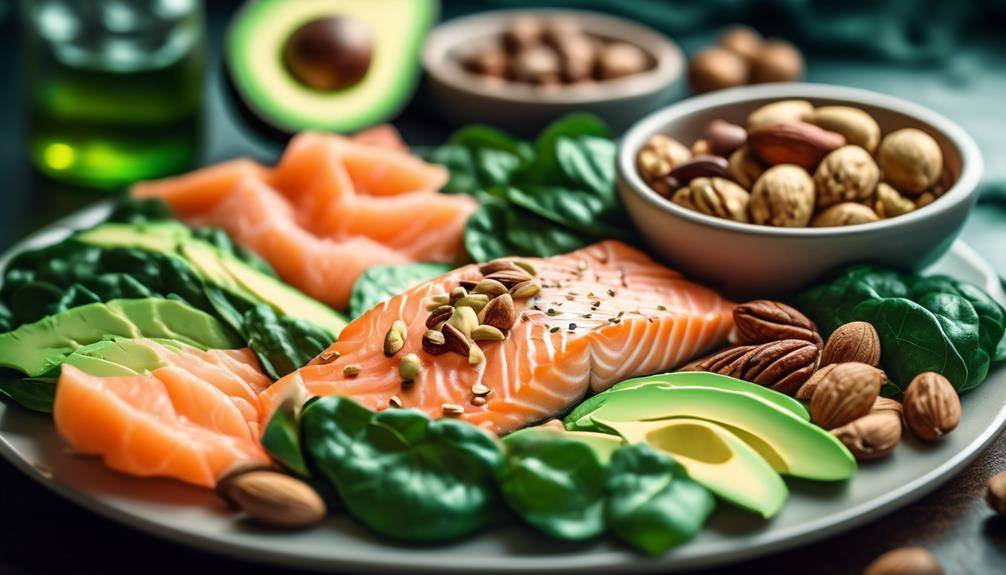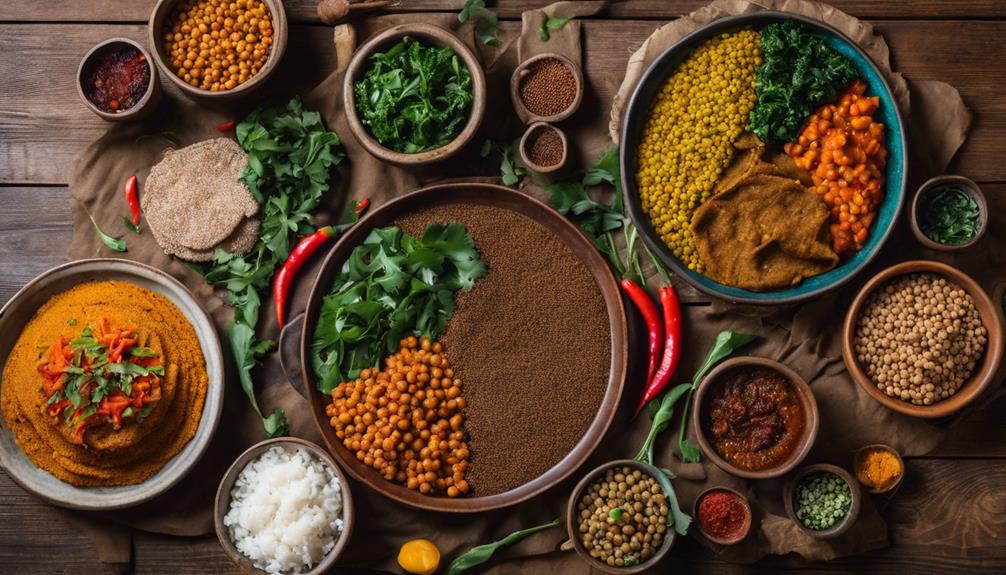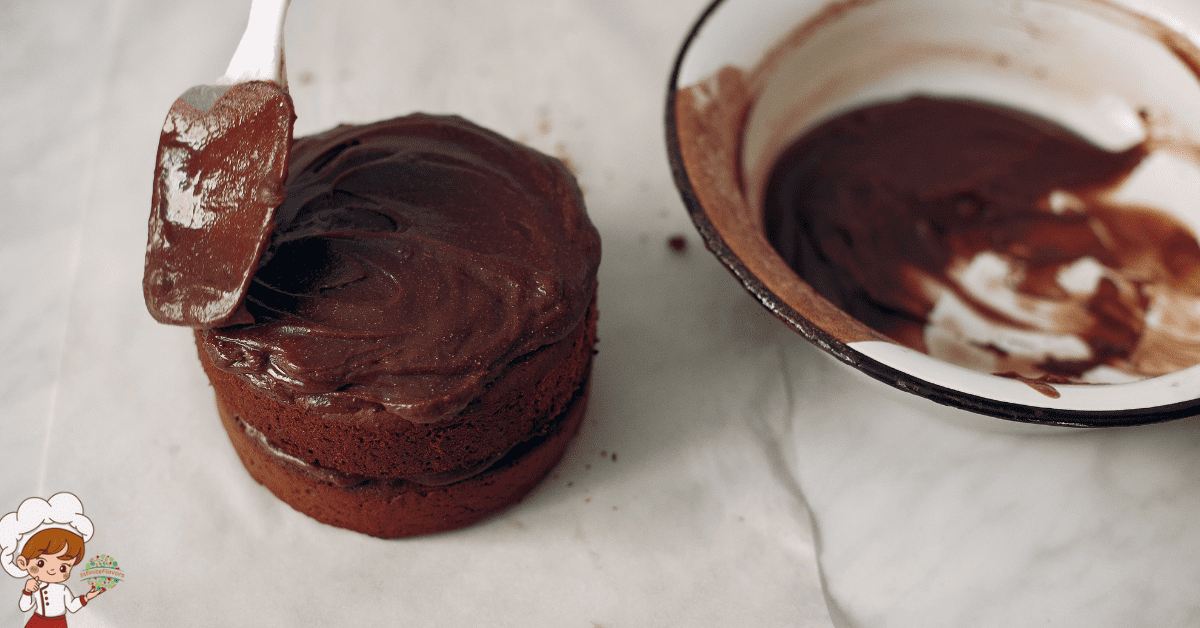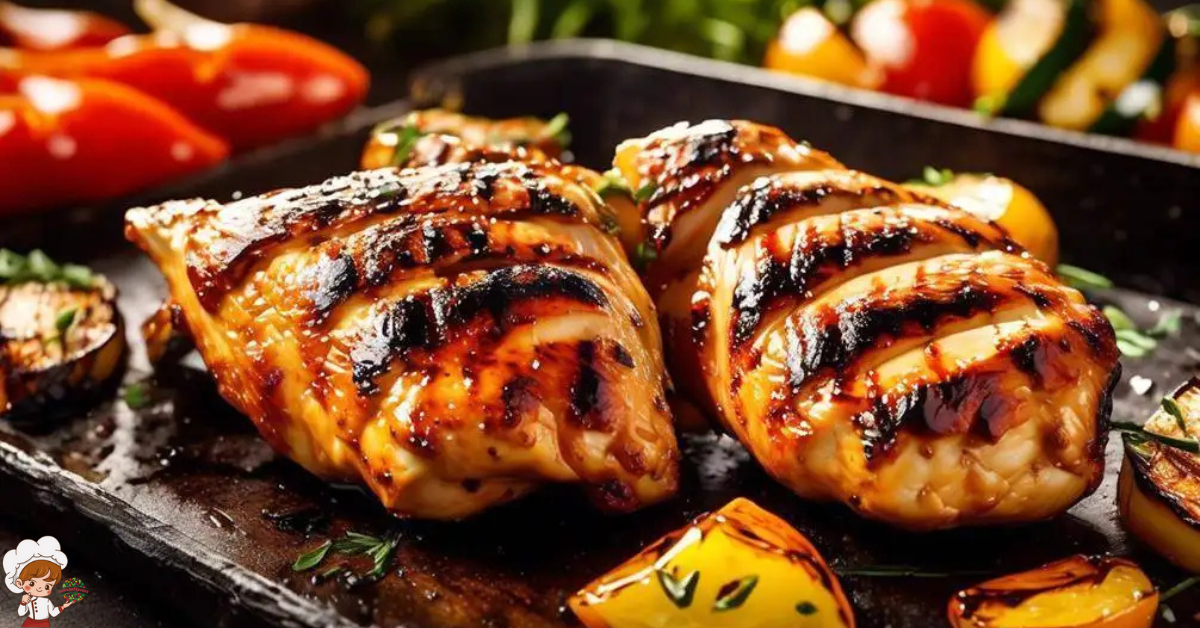Popular Ketogenic Diet Principles Meal Ideas

Ketogenic Diet Principles Meal Ideas; Are you tired of diets that leave you feeling as empty as a deflated balloon? Look no further than the ketogenic diet, a powerful way to transform your body and boost your energy levels. With its focus on low-carb, high-fat foods, the ketogenic diet aims to put your body in a state of ketosis, where it burns fat for fuel instead of carbohydrates. But what exactly should you be eating on this diet?
Don’t worry, we’ve got you covered. In this discussion, we will explore the principles of the ketogenic diet and provide you with some tantalizing meal ideas that will make your taste buds sing. So, get ready to embark on a culinary adventure that will leave you satisfied, nourished, and ready to take on the world.
What Is the Ketogenic Diet?
The ketogenic diet is a low-carbohydrate, high-fat diet that has gained popularity for its potential benefits in weight loss and improving certain health conditions. This diet focuses on reducing carbohydrate intake and increasing fat consumption, which puts your body in a state of ketosis. Ketosis occurs when your body doesn’t have enough carbohydrates to burn for energy, so it starts burning fat instead.
One of the main benefits of the ketogenic diet is its effectiveness in weight loss. By limiting your carbohydrate intake, your body is forced to tap into its fat stores for energy. This can lead to significant weight loss, especially in the form of body fat. Additionally, the ketogenic diet has been shown to help control hunger and cravings, making it easier to adhere to and sustain long-term.
Another potential benefit of the ketogenic diet is its impact on certain health conditions. Research suggests that the ketogenic diet may be beneficial for individuals with epilepsy, as it can help reduce the frequency and severity of seizures. It may also have potential benefits for individuals with type 2 diabetes, as it can improve insulin sensitivity and blood sugar control.
However, it is important to note that the ketogenic diet is not without its health risks. Due to its high fat content, the diet may increase your risk of heart disease and other cardiovascular conditions. It may also lead to nutrient deficiencies if not properly planned and monitored. It is important to consult with a healthcare professional before starting any new diet, especially if you have any underlying health conditions.
Benefits of the Ketogenic Diet
One of the key advantages of adopting the ketogenic diet is its potential to promote weight loss and improve certain health conditions. The ketogenic diet, which is low in carbohydrates, high in fat, and moderate in protein, has been shown to be effective for weight loss due to its ability to induce a state of ketosis in the body. When in ketosis, the body burns fat for fuel instead of carbohydrates, leading to a reduction in body weight.
Here are some additional benefits of the ketogenic diet:
- Improved insulin sensitivity: The ketogenic diet can help improve insulin sensitivity, which is beneficial for individuals with diabetes or prediabetes. By reducing carbohydrate intake, the body’s insulin response becomes more efficient, leading to better blood sugar control.
- Increased satiety: The high fat and moderate protein content of the ketogenic diet can help increase feelings of fullness and reduce hunger. This can be particularly beneficial for individuals trying to lose weight, as it can help control calorie intake and prevent overeating.
- Enhanced mental clarity and focus: The ketogenic diet has been reported to improve cognitive function and mental clarity. This is thought to be due to the brain’s ability to utilize ketones, which are produced during ketosis, as an alternative fuel source.
- Reduced seizures in epilepsy: The ketogenic diet has been used for decades as a therapy for epilepsy, particularly in children who do not respond well to medication. The diet has been shown to reduce the frequency and severity of seizures in some individuals with epilepsy.
- Potential anti-inflammatory effects: Some research suggests that the ketogenic diet may have anti-inflammatory effects, which could be beneficial for individuals with conditions such as arthritis or inflammatory bowel disease.
How Does the Ketogenic Diet Work?
The ketogenic diet works by inducing a state of ketosis, where your body burns fat for fuel instead of carbohydrates. This is achieved by restricting your carbohydrate intake and increasing your fat consumption. By doing so, your insulin levels are lowered, which can have various benefits such as improved blood sugar control and reduced hunger.
Ketosis and Fat Burning
To understand how the ketogenic diet works, it is important to delve into the concept of ketosis and its role in promoting fat burning. When you follow a ketogenic diet, your body enters a state of ketosis, which is characterized by the production of ketones from fat stored in your body. This metabolic state has several benefits, including:
- Increased fat burning: Ketosis allows your body to use fat as its primary source of fuel, leading to greater fat burning and weight loss.
- Reduced appetite: Ketosis can help suppress hunger and cravings, making it easier to stick to a calorie deficit and achieve your weight loss goals.
- Improved mental clarity: Many people report increased focus and mental clarity while in ketosis.
- Stable energy levels: By relying on fat for fuel, ketosis provides a steady supply of energy throughout the day, preventing energy crashes.
- Potential health benefits: Some studies suggest that ketosis may have beneficial effects on various health conditions, such as epilepsy, type 2 diabetes, and metabolic syndrome.
Carbohydrate Restriction Benefits
When you restrict carbohydrates on a ketogenic diet, you initiate a series of physiological changes that contribute to its effectiveness in promoting weight loss and overall health. By limiting your intake of carbohydrates, your body is forced to find alternative sources of energy. It starts breaking down stored fats into ketones, which can be used as fuel for the body and brain. This process, known as ketosis, not only aids in weight loss but also has benefits for cognitive function.
Research suggests that carbohydrate restriction can lead to improved cognitive function, including enhanced focus, mental clarity, and memory. Additionally, reducing carbohydrates can help stabilize blood sugar levels and decrease cravings for sugary foods, further supporting weight loss efforts. Overall, carbohydrate restriction on a ketogenic diet offers multiple benefits for both weight management and cognitive function.
Impact on Insulin Levels
Restricting carbohydrates on a ketogenic diet has a profound impact on insulin levels, playing a crucial role in how the diet works to promote weight loss and overall health. By reducing carbohydrate intake, the body is forced to switch from using glucose as its primary fuel source to using ketones produced from fat. This shift in metabolism leads to lower insulin levels, as insulin is primarily released in response to carbohydrate consumption.
The reduction in insulin helps to stabilize blood sugar levels, preventing spikes and crashes that can contribute to weight gain and cravings. The ketogenic diet also has a positive effect on weight loss by promoting fat burning and increasing satiety, leading to reduced calorie intake. Overall, the diet’s impact on insulin levels and blood sugar regulation plays a significant role in its effectiveness for weight loss and improving overall health.
- Lower insulin levels contribute to more stable blood sugar levels.
- Stable blood sugar levels help reduce cravings and prevent overeating.
- The ketogenic diet promotes fat burning and increases satiety.
- Reduced calorie intake leads to weight loss.
- Better blood sugar regulation improves overall health.
Foods to Include in a Ketogenic Diet
Including a variety of nutrient-dense foods in your ketogenic diet is essential for maintaining optimal health and achieving your desired results. When planning your meals, it’s important to focus on foods that are low in carbohydrates and high in healthy fats. Here are some examples of foods that you can include in your ketogenic diet and add to your keto-friendly grocery list.
Firstly, prioritize foods that are high in healthy fats. Avocados, coconut oil, olive oil, and grass-fed butter are all excellent sources of healthy fats that can be incorporated into your meals. These fats not only provide energy, but they also help to keep you feeling full and satisfied.
Next, include a variety of low-carbohydrate vegetables. Leafy greens such as spinach and kale are not only low in carbs but also packed with essential nutrients. Other keto-friendly vegetables include broccoli, cauliflower, zucchini, and bell peppers. These vegetables can be enjoyed in salads, stir-fries, or roasted as a side dish.
Protein is an important component of any diet, and the ketogenic diet is no exception. Opt for high-quality sources of protein such as grass-fed beef, free-range poultry, wild-caught fish, and eggs. These protein sources provide essential amino acids for muscle growth and repair.
In addition to these food groups, it’s important to include nuts and seeds in your ketogenic diet. Almonds, walnuts, chia seeds, and flaxseeds are all excellent choices. They are not only low in carbohydrates but also provide fiber, healthy fats, and essential minerals.
Foods to Avoid on a Ketogenic Diet
When following a ketogenic diet, there are certain foods that you should avoid. These foods are considered forbidden and contain ingredients that can hinder your progress. By being aware of these off-limits ingredients, you can make informed choices and stay on track with your ketogenic journey.
Forbidden Foods
To adhere to a ketogenic diet, it is important to be mindful of the foods that are not recommended for consumption. Here are five forbidden foods that you should avoid on a ketogenic diet:
- Sugar: Sugary foods such as candy, soda, and desserts are high in carbohydrates and can kick you out of ketosis.
- Grains: Foods like bread, rice, and pasta are high in carbs and should be avoided.
- Fruit: While fruits are generally healthy, most of them are high in natural sugars and can hinder ketosis.
- Starchy vegetables: Potatoes, corn, and carrots are examples of starchy vegetables that are high in carbs and should be limited.
- Processed foods: These often contain hidden sugars and unhealthy fats that can sabotage your ketogenic goals.
Instead of these forbidden foods, opt for healthier alternatives such as low-carb vegetables, lean meats, fish, eggs, nuts, and healthy fats like avocados and olive oil. Remember to read labels and choose whole, unprocessed foods to support your ketogenic journey.
Off-Limits Ingredients
Now that you are aware of the forbidden foods on a ketogenic diet, let’s explore the off-limits ingredients that should be avoided to maintain ketosis. When following a ketogenic diet, it is important to steer clear of certain ingredients that can hinder your progress. One of these is gluten, a protein found in wheat, barley, and rye.
Gluten can spike your blood sugar levels and kick you out of ketosis. However, there are gluten-free alternatives that can be used as healthy substitutes. For example, almond flour and coconut flour are excellent replacements for wheat flour and can be used in baking. Additionally, cauliflower can be used as a substitute for rice or mashed potatoes. These gluten-free alternatives can help you stay on track with your ketogenic diet while still enjoying delicious meals.
Meal Planning for the Ketogenic Diet
Effective meal planning is essential for successfully following the ketogenic diet and achieving your desired health and weight loss goals. By carefully planning your meals, you can ensure that you are getting the right balance of macronutrients, keeping your carbohydrate intake low, and maximizing the benefits of the ketogenic diet. Here are some tips to help you with your meal planning:
- Variety: Incorporate a variety of foods into your meal plans to ensure you are getting a wide range of nutrients. This will also help prevent boredom and make it easier to stick to the diet long-term.
- Meal Prep: Spend some time each week preparing and portioning out your meals in advance. This will save you time during the week and make it easier to make healthy choices when you are busy or on the go.
- Snack Options: Plan for healthy, low-carb snacks to have on hand for when hunger strikes between meals. This will help prevent you from reaching for high-carb options and keep you on track with your ketogenic diet.
- Mindful Eating: Take the time to listen to your body and eat when you are hungry, rather than eating out of habit or boredom. Pay attention to portion sizes and make sure you are eating until you are satisfied, but not overly full.
- Adjustments: Be flexible with your meal plans and make adjustments as needed. Everyone’s dietary needs and preferences are different, so it’s important to listen to your body and make changes that work for you.
Breakfast Ideas for the Ketogenic Diet
When it comes to following the ketogenic diet and achieving your health and weight loss goals, breakfast plays a crucial role in providing you with the energy and nutrients you need to start your day. Following a high-fat, low-carb diet like the ketogenic diet can be challenging when it comes to finding breakfast options that are both delicious and compliant with the diet’s principles. However, with a little creativity, you can enjoy a satisfying and nutritious breakfast every morning.
One of the key benefits of a high-fat breakfast on the ketogenic diet is that it helps keep you satiated throughout the morning. Consuming a meal rich in healthy fats can help stabilize your blood sugar levels, preventing energy crashes and reducing cravings for sugary, high-carb foods. Additionally, a high-fat breakfast can provide you with a sustained source of energy, making it easier for your body to transition into a fat-burning state, known as ketosis.
To get started with ketogenic diet breakfast recipes, consider incorporating foods like eggs, avocado, bacon, and coconut oil into your morning routine. Scrambled eggs cooked in butter or coconut oil, topped with avocado slices and a sprinkle of cheese, make for a delicious and filling breakfast option. Another idea is to make a breakfast casserole with eggs, spinach, sausage, and cheese, which can be prepared ahead of time and enjoyed throughout the week.
If you prefer a grab-and-go option, consider making a batch of keto-friendly muffins using almond flour and coconut oil, or prepare chia seed pudding with coconut milk and a sprinkle of nuts. These options are not only convenient but also provide you with a good amount of healthy fats to keep you satisfied until lunchtime.
Lunch Ideas for the Ketogenic Diet
Looking for satisfying and nutritious lunch ideas that are compliant with the ketogenic diet? Look no further! Here are some delicious ketogenic lunch recipes that will keep you energized and satiated throughout the day.
- Avocado Chicken Salad: Mix diced chicken breast with mashed avocado, chopped celery, and a splash of lemon juice for a refreshing and creamy salad. Serve it on a bed of lettuce or in a low-carb wrap for a satisfying meal.
- Baked Salmon: Season a salmon fillet with herbs and spices of your choice and bake it until it’s flaky and tender. Serve it with a side of roasted vegetables or a green salad for a nutritious and filling lunch.
- Cauliflower Fried Rice: Transform cauliflower rice into a flavorful and low-carb alternative to traditional fried rice. Sauté cauliflower rice with your favorite vegetables, diced chicken or shrimp, and a splash of soy sauce or coconut aminos for a delicious lunch option.
- Zucchini Noodles with Pesto: Spiralize zucchini into noodles and toss them with homemade or store-bought pesto sauce. Top it off with grilled chicken or shrimp for added protein and enjoy a light and refreshing lunch.
- Keto Cobb Salad: Combine mixed greens, crispy bacon, hard-boiled eggs, avocado, cherry tomatoes, and grilled chicken in a bowl. Drizzle with a creamy ranch or blue cheese dressing for a classic and satisfying lunch option.
When it comes to meal prep for keto lunch, consider preparing larger batches of proteins like grilled chicken, salmon, or hard-boiled eggs at the beginning of the week. This way, you can easily incorporate them into various lunch recipes throughout the week. Additionally, make sure to have plenty of fresh vegetables, avocados, and healthy fats like olive oil and nuts on hand to create balanced and nutritious meals. With these ketogenic lunch ideas and meal prep tips, you’ll be well on your way to enjoying satisfying and delicious lunches while staying on track with your keto diet.
Dinner Ideas for the Ketogenic Diet
For a satisfying and nutritious dinner that aligns with the ketogenic diet, consider these delicious meal ideas. When following the ketogenic diet, it’s important to focus on low-carb, high-fat foods that promote ketosis and keep your body in a state of burning fat for energy. There are plenty of dinner recipes that can help you stay on track with your ketogenic lifestyle.
One popular dinner option is grilled chicken or salmon with a side of roasted vegetables. These lean proteins are not only delicious but also provide essential nutrients. Pair them with low-carb vegetables like broccoli, cauliflower, or zucchini for a nutritious and filling meal.
Another dinner idea is a cauliflower crust pizza. Instead of traditional pizza dough, the crust is made from cauliflower, cheese, and eggs. Top it with your favorite low-carb toppings like pepperoni, mushrooms, or olives for a satisfying and keto-friendly dinner.
If you’re looking for dining out options, many restaurants offer keto-friendly meals. Opt for a bunless burger with a side of avocado or a grilled steak with a side of buttered vegetables. You can also customize meals by asking for substitutions or modifications to fit your dietary needs.
When planning your ketogenic dinner, remember to prioritize healthy fats like avocados, olive oil, and nuts. These fats are not only essential for a balanced diet but also help keep you feeling full and satisfied.
Snack Ideas for the Ketogenic Diet
To continue supporting your ketogenic lifestyle, let’s now explore some snack ideas that are both delicious and align with the principles of the ketogenic diet. When it comes to snacking on a low carb diet, it’s important to choose options that are satisfying and won’t derail your progress. Here are five low carb snack options that will keep you satisfied on your ketogenic journey:
- Avocado and Bacon Roll-Ups: Slice an avocado and wrap each slice with a strip of bacon. Bake until the bacon is crispy and enjoy the creamy texture of the avocado with the smoky flavor of bacon.
- Cheese and Salami Roll-Ups: Take a slice of your favorite cheese and wrap it around a piece of salami. This combination of protein and fat will keep you feeling full and satisfied.
- Kale Chips: Toss kale leaves with olive oil, salt, and your choice of seasoning (such as garlic powder or paprika). Bake until crispy for a crunchy and nutritious snack.
- Hard-Boiled Eggs: Hard-boiled eggs are a simple and convenient snack option. They are packed with protein and healthy fats, making them an ideal choice for the ketogenic diet.
- Almond Butter Fat Bombs: Mix almond butter with coconut oil, a sweetener of your choice (such as stevia or erythritol), and a pinch of salt. Roll into bite-sized balls and refrigerate until firm. These fat bombs are a delicious and satisfying treat.
Dessert Ideas for the Ketogenic Diet
Looking for something sweet while on the ketogenic diet? You’re in luck! There are plenty of low-carb sweet treats that you can enjoy without derailing your progress. From sugar-free indulgences to healthy fat desserts, there are many options to satisfy your dessert cravings while staying on track with your ketogenic goals.
Low-Carb Sweet Treats
Indulge in guilt-free dessert options that are low in carbs, while still satisfying your sweet tooth on the ketogenic diet. Here are some delicious low-carb sweet treats to enjoy:
- Dark Chocolate: Look for chocolate with a high percentage of cocoa (70% or higher) to keep the carb count low.
- Avocado Chocolate Mousse: Blend ripe avocados with cocoa powder and a natural sweetener for a creamy and decadent dessert.
- Berries with Whipped Cream: Enjoy a bowl of fresh berries topped with homemade whipped cream for a refreshing and satisfying treat.
- Keto-Friendly Ice Cream: Opt for low-carb ice cream brands or make your own using heavy cream, unsweetened almond milk, and keto-approved sweeteners.
- Coconut Flour Brownies: These fudgy brownies made with coconut flour are a delicious and low-carb alternative to traditional ones.
Sugar-Free Indulgences
Now let’s explore some sugar-free indulgences that will satisfy your sweet tooth on the ketogenic diet. Just because you’re following a low-carb eating plan doesn’t mean you have to give up on delicious desserts. With the rise of low carb baking, there are plenty of options for keto-friendly chocolate treats that won’t spike your blood sugar levels. Look for dark chocolate with a high percentage of cocoa and minimal added sugars. You can also experiment with homemade treats using low-carb sweeteners like stevia or erythritol. There are keto-friendly chocolate bars available that are specifically formulated for those following a ketogenic diet. Remember to enjoy these indulgences in moderation as part of a balanced low-carb eating plan.
Healthy Fat Desserts
One option for satisfying your sweet tooth on the ketogenic diet is to explore a variety of healthy fat desserts. These desserts are not only delicious but also low in carbs, making them perfect for those following a keto lifestyle. Here are five mouthwatering options to consider:
- Dark chocolate avocado mousse: Indulge in a creamy and rich mousse made with ripe avocados and dark chocolate. It’s a perfect combination of healthy fats and decadent flavors.
- Keto-friendly ice cream: Enjoy a scoop or two of low-carb ice cream made with ingredients like coconut milk, heavy cream, and natural sweeteners. It’s a guilt-free treat that will satisfy your cravings.
- Chocolate fat bombs: These little treats are packed with healthy fats and a hint of chocolate. They are easy to make and can be enjoyed as a quick, on-the-go dessert.
- Coconut flour brownies: Indulge in a fudgy and moist brownie made with coconut flour instead of regular flour. It’s a low-carb alternative that doesn’t compromise on taste.
- Peanut butter fat bombs: If you’re a peanut butter lover, these fat bombs are for you. They are rich, creamy, and satisfy your sweet tooth while keeping your carbs in check.
With these low carb chocolate treats and keto-friendly ice cream, you can enjoy a delicious dessert while staying on track with your ketogenic diet.
Ketogenic Diet Principles Meal Ideas; Frequently Asked Questions
Can I Drink Alcohol on the Ketogenic Diet?
Yes, you can drink alcohol on the ketogenic diet, but there are restrictions. Alcohol can affect ketosis by slowing down fat burning. Stick to low-carb options like vodka or dry wine in moderation.
Is It Safe to Follow the Ketogenic Diet for an Extended Period of Time?
It is generally safe to follow the ketogenic diet for an extended period of time, but it’s important to be aware of potential long-term effects and nutritional deficiencies. Consulting with a healthcare professional is recommended.
Are There Any Potential Side Effects of the Ketogenic Diet?
There are potential health risks and long-term effects associated with the ketogenic diet. It is important to be aware of these, as they can include nutrient deficiencies, keto flu, and changes in cholesterol levels.
Can I Still Exercise and Maintain My Energy Levels on the Ketogenic Diet?
Yes, you can still exercise and maintain your energy levels on the ketogenic diet. While it may take some time for your body to adjust to using ketones for energy during workouts, many people report improved endurance and performance once in ketosis.
Is It Necessary to Track Macronutrients on the Ketogenic Diet?
Yes, it is necessary to track macronutrients on the ketogenic diet to ensure ketosis maintenance. By tracking your macros, you can accurately control your carb intake and optimize fat and protein consumption for the best results.
Conclusion
In conclusion, the ketogenic diet is a low-carb, high-fat eating plan that has been shown to have numerous health benefits. By reducing carbohydrate intake and increasing fat consumption, the body enters a state of ketosis, where it burns fat for fuel instead of carbohydrates. This can lead to weight loss, improved blood sugar control, and increased energy levels. However, it is important to consult with a healthcare professional before starting any new diet.








